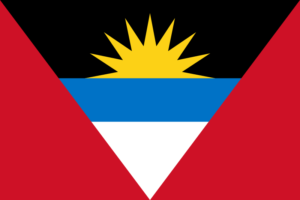History of Antigua and Barbuda:
The first inhabitants of Antigua were the Sibonians, also known as the Stone People. Next came the Arawak, a Native American tribe from Venezuela. Over time, the Arawak migrated north through the islands. They brought new crops such as pineapple, corn, tobacco and cotton.
In 1493 Christopher Columbus arrived on this island. He named the largest island Santa Maria de la Antigua. A few years later, in 1632, the British arrived to colonize the island. They built large sugar plantations and brought slaves to work on the land.
Slavery was abolished by him in 1834, but working conditions for local workers remained poor for many years. In 1981 Antigua and Barbuda became an independent state within the Commonwealth of Nations.
Information about Antigua and Barbuda:
| Capital | Saint John’s |
| Population | 94,369 (Source: 2023 worldometer) |
| Major Cities | SAINT JOHN’S (capital), All Saints |
| Borders | Saint Kitts and Nevis, Anguilla (UK), Montserrat (UK) and Saint Barthélemy (France) |
| Gross Domestic Product (GDP) | $1,757,603,704 (2022 worldometer) |
| Currency | East Caribbean dollar (XCD) |
Flag of Antigua and Barbuda:
Antigua and Barbuda Economy Key Industries:
Antigua and Barbuda Major Industries: tourism, construction, light manufacturing (clothing, alcohol, household appliances)
Antigua and Barbuda Agricultural Products: cotton, fruits, vegetables, bananas, coconuts, cucumbers, mangoes, sugarcane; livestock
Antigua and Barbuda Natural Resources: NEGL; pleasant climate fosters tourism
Antigua and Barbuda Major Exports: petroleum products 48%, manufactures 23%, machinery and transport equipment 17%, food and live animals 4%, other 8%
Antigua and Barbuda Major Imports: food and live animals, machinery and transport equipment, manufactures, chemicals, oil
The Geography of Antigua and Barbuda:
Total Size of Antigua and Barbuda: 443 sq km (source: 2022 The world factbook)
Geographical Low Point of Antigua and Barbuda: Caribbean Sea 0 m
Geographical High Point of Antigua and Barbuda: Vinson Massif 4,897 m
Climate of Antigua and Barbuda: tropical maritime; little seasonal temperature variation
General Terrain of Antigua and Barbuda: mostly low-lying limestone and coral islands, with some higher volcanic areas
World Region or Continent of Antigua and Barbuda: Central America
Geographical Coordinates: 17 03 N, 61 48 W
The People of Antigua and Barbuda & Culture
Antigua and Barbuda Government Type: constitutional parliamentary democracy
Antigua and Barbuda Nationality: Antiguan(s), Barbudan(s)
Antigua and Barbuda National Holiday: Independence Day (National Day), 1 November (1981)
Antigua and Barbuda Independence: 1 November 1981 (from UK)
Antigua and Barbuda National Symbol:
Antigua and Barbuda National Anthem or Song: Fair Antigua, We Salute Thee
Antigua and Barbuda Languages Spoken: English (official), local dialects
Antigua and Barbuda Religions: Christian (predominantly Anglican with other Protestant, and some Roman Catholic)
Interesting Facts about Antigua and Barbuda:
Antigua and Barbuda is actually three islands
Mount Obama is the highest peak on the island of Antigua.
Antigua is one of the smallest countries on earth and ranks 182nd in terms of area.
Antigua is also called the land of 365 beaches
The current population of Antigua and Barbuda is 99,539.
Antigua has a rich cultural heritage with British and African influences.
English is the official language in Antica and Barbuda.
Antigua has the largest frigatebird breeding colony in the Caribbean
The chances of encountering sharks, especially reef sharks and nurse sharks, are very high while diving near the coast of Antigua.
At least 182 species of birds have been recorded in Antigua.
The flag was adopted on February 27, 1967 to mark the realization of autonomy.
Antigua is a gastronomic destination with fresh seafood, delicious rum and savory dishes.
Antigua was visited by Christopher Columbus in his 1493.
cricket is the national sport
The capital of Antigua is Saint John’s


